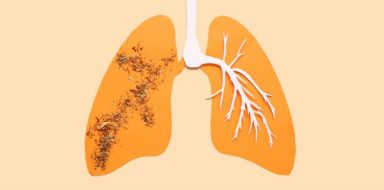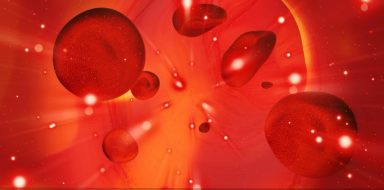Unraveling the Connection
Lupus is an autoimmune disease infamously known for its complexity and the wide array of symptoms that it can manifest in those affected. Notably, there is a significant association between lupus and women undergoing menopausal transition, given the hormonal changes that characterize this period. In this article, we will explore the warning signs of lupus, its causes and the intriguing link to menopause. We will also look at treatment options, including BENLYSTA, a prescribed medication designed for individuals with active lupus who are undergoing treatment with other lupus medications.
Warning Signs of Lupus
Lupus is a great imitator, making its diagnosis challenging. Symptoms vary widely and may progress slowly or emerge suddenly. Despite this variability, there are several warning signs to look out for.
1. Fever
Unexplained fevers that come and go can be an early sign of lupus.
2. Fatigue
Persistent and unexplained fatigue is a common symptom, hindering daily activities.
3. Joint Pain, Stiffness and Swelling
Many individuals experience joint pain and stiffness, often accompanied by swelling.
4. Butterfly Rash
A hallmark of lupus is the butterfly rash—a reddish coloration that covers the bridge of the nose and spreads across the cheeks.
This article will cover the lung cancer risks during menopause. Read on to learn more about how they correlate.
5. Skin Lesions
Lupus may cause skin lesions that are exacerbated when exposed to sunlight.
6. Raynaud's Phenomenon
In response to stress or cold temperatures, fingers and toes may turn white or blue—a condition called Raynaud's phenomenon.
7. Shortness of Breath and Chest Pain
Inflammation of the protective lining around the heart or lungs may cause these symptoms.
8. Dry Eyes
Lupus can affect glands in the eyes, leading to chronic dryness.
9. Neurological Symptoms
Headaches, confusion and memory loss may occur as lupus affects the nervous system.
10. Hair Loss
Lupus can attack the hair follicles, causing hair to fall out.
What is Lupus and What Causes It?
Lupus (systemic lupus erythematosus, or SLE) is an autoimmune condition where the immune system attacks its own tissues, mistaking them for foreign invaders. This can cause inflammation and damage across various body systems.
The causes of lupus are not wholly understood, but they are believed to arise from an interplay of genetic, hormonal and environmental factors.
- Genetics: While lupus is not directly inherited, having a family member with lupus or another autoimmune disease can increase risk.
- Hormones: Lupus is more common in women, suggesting sex hormones like estrogen play a role.
- Environmental Factors: Exposure to sunlight, infections and certain medications can trigger lupus in genetically susceptible individuals.
- Smoking: Smoking may not only increase the risk of developing lupus but also worsen its symptoms.
The Link Between Menopause and Lupus
The intersection between menopause and lupus is a topic of ongoing research. Menopause represents a significant shift in a woman's hormonal balance, notably characterized by a decrease in estrogen levels. As lupus predominantly affects women during their childbearing years and is influenced by estrogen, the hormonal fluctuations occurring during menopause can impact the course of the disease. Studies suggest that women with lupus tend to experience an earlier onset of menopause. Furthermore, the menopausal transition may exacerbate lupus symptoms, leading to increased disease activity in some women.
There are a few theories that explain why this connection may exist. One is that estrogen influences the immune system and the reduced levels of this hormone during menopause might cause an imbalance that affects lupus symptoms. Another consideration is that androgens (male hormones that are present in women in small amounts) could have protective effects that become more prominent after the decline in estrogen.
Treatments for Lupus
While there is no cure for lupus, treatments are available that can help control symptoms and improve quality of life. Here are some common treatment methods for lupus.
- Hydroxychloroquine: Originally used to treat malaria, hydroxychloroquine can help manage skin and joint symptoms and prevent lupus flares.
- NSAIDs: Nonsteroidal anti-inflammatory drugs can relieve pain and reduce swelling.
- Corticosteroids: Powerful anti-inflammatory medications that can control severe lupus symptoms.
- Immunosuppressants: Drugs like azathioprine, methotrexate and mycophenolate mofetil can suppress the immune system to limit tissue damage.
- Benlysta: Benlysta (belimumab) is a monoclonal antibody that can help reduce symptoms and disease activity in some patients. It works by targeting a specific protein in the immune system called B-lymphocyte stimulator (BLyS) or B-cell activating factor (BAFF). In lupus, there is an overactivity of B cells, which play a role in the immune response.
Lupus and the Menopausal Transition
Lupus remains a complex autoimmune disease, with menopause representing a potentially pivotal time for women living with the condition. Recognition of the signs and symptoms of lupus, coupled with an understanding of its causes and the influence of menopause, can guide effective strategies for managing the disease. Women with lupus need to work closely with their healthcare providers to manage the transition into menopause effectively.







